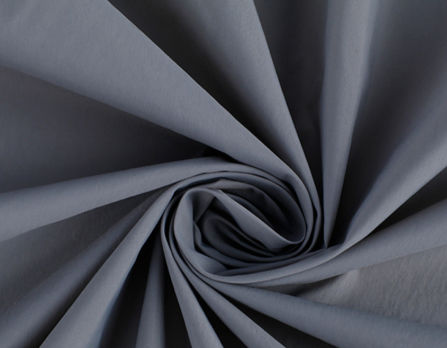
폴리아미드 통기성 원단 소개
폴리아미드, 일명 나일론는 석유 기반 화학 물질에서 추출한 합성 폴리머입니다. 강도, 내구성, 내마모성으로 잘 알려진 폴리아미드는 다양한 용도에 이상적인 소재입니다. 이 섹션에서는 폴리아미드의 주요 특성과 통기성에 대한 개요를 제공합니다.
폴리아미드와 그 특성 이해
폴리아미드는 인상적인 강도와 내구성으로 잘 알려져 있습니다. 마모와 찢어짐에 강해 의류부터 산업 분야에 이르기까지 다양한 용도에 적합합니다. 폴리아미드의 뛰어난 특성 중 하나는 통기성, 즉 수증기가 통과할 수 있는 원단의 능력입니다. 이 기능은 의류와 직물에서 특히 중요하며, 신체 활동이나 습한 환경에서 착용자에게 편안함과 건조함을 보장합니다.
폴리아미드의 분자 구조와 통기성
폴리아미드의 통기성은 분자 구조에 기인합니다. 폴리머 사슬은 직물의 강도와 무결성을 유지하면서 수증기가 통과할 수 있도록 배열되어 있습니다. 이러한 배열은 폴리머 사슬의 수소 원자가 수분 분자의 산소 원자와 일시적인 결합을 형성하는 수소 결합을 통해 이루어집니다. 이 과정을 통해 수분이 흡수되지 않고 원단을 통과하여 쾌적함을 보장하고 땀과 냄새가 쌓이는 것을 방지합니다.
폴리아미드 원단의 추가 이점
폴리아미드 원단은 통기성 외에도 다양한 용도로 활용할 수 있는 몇 가지 장점이 있습니다. 이 섹션에서는 이러한 이점을 자세히 살펴봅니다.
높은 인장 강도 및 내마모성
폴리아미드는 인장 강도가 높고 마모에 강하기 때문에 중장비 및 보호복에 적합합니다. 내구성이 뛰어나 까다로운 용도에서 수명과 신뢰성을 보장합니다.
내화학성 및 자외선 내성
폴리아미드는 화학 물질과 자외선에 대한 내성이 뛰어나 텐트, 어닝, 돛과 같은 실외용 제품에 이상적입니다. 이러한 저항성은 열악한 환경 조건에 노출된 제품의 수명을 연장합니다.
가볍고 습기를 흡수하는 특성
폴리아미드의 가벼운 특성 덕분에 스포츠웨어와 액티브웨어에서 인기가 높습니다. 이 원단은 피부에서 습기를 배출하여 체온을 조절하고 마찰을 방지하므로 운동선수와 아웃도어 애호가에게 편안한 선택입니다. 또한 수분 흡수에 강해 빠른 건조가 가능해 물 기반 활동이나 습한 기후에서 필수적입니다.
폴리아미드의 환경적 고려 사항
폴리아미드는 많은 이점을 제공하지만 환경적인 단점도 있습니다. 이 섹션에서는 이러한 우려 사항과 지속 가능한 대안에 대해 설명합니다.
폴리아미드 생산이 환경에 미치는 영향
폴리아미드 생산에는 석유 기반 화학물질이 사용되기 때문에 오염과 천연자원 고갈의 원인이 됩니다. 게다가 폴리아미드는 생분해되지 않아 매립지에서 분해되는 데 수백 년이 걸립니다. 이러한 요인들로 인해 폴리아미드가 환경에 미치는 영향에 대한 우려가 제기되고 있습니다.
지속 가능성을 위한 노력
피마자 콩과 같은 재생 가능한 자원에서 추출한 바이오 기반 폴리아미드와 같이 보다 지속 가능한 대안을 개발하기 위한 노력이 이루어지고 있습니다. 이러한 혁신은 폴리아미드 생산에 따른 환경 발자국을 줄이고 보다 친환경적인 옵션을 만드는 것을 목표로 합니다.
결론
폴리아미드 통기성 원단은 다양한 이점을 제공하여 다양한 용도에 매력적인 선택이 될 수 있습니다. 통기성, 강도, 화학물질 및 자외선에 대한 내성 덕분에 의류, 섬유 및 아웃도어 장비에 사용하기에 적합합니다. 하지만 폴리아미드 생산이 환경에 미치는 영향을 고려하고 지구에 미치는 부정적인 영향을 최소화하기 위해 보다 지속 가능한 대안을 모색하는 것이 중요합니다.
요약 FAQ: 폴리아미드 통기성 원단의 과학적 원리
1. 폴리아미드 통기성 원단이란 무엇인가요?
일반적으로 나일론으로 알려진 폴리아미드 통기성 원단은 석유 기반 화학 물질에서 추출한 합성 폴리머입니다. 강도와 내구성이 뛰어나고 수증기를 통과시켜 쾌적함과 건조함을 제공하는 것으로 유명합니다.
2. 폴리아미드가 통기성이 좋은 이유는 무엇인가요?
폴리아미드의 통기성은 분자 구조에 기인합니다. 폴리머 사슬은 직물의 강도와 무결성을 유지하면서 수증기가 통과할 수 있도록 배열되어 있습니다. 이는 수분이 흡수되지 않고 원단을 통과할 수 있도록 하는 수소 결합을 통해 이루어집니다.
3. 폴리아미드 원단의 추가적인 장점은 무엇인가요?
폴리아미드 원단은 다음과 같은 여러 가지 이점을 제공합니다:
- 높은 인장 강도와 내마모성
- 화학 물질 및 자외선에 대한 내성
- 가볍고 습기를 흡수하는 특성
- 빠른 건조 기능
4. 폴리아미드 원단의 일반적인 응용 분야는 무엇입니까?
폴리아미드 원단은 다음과 같은 다양한 용도로 사용됩니다:
- 의류 및 직물
- 중장비 및 보호 복
- 텐트, 어닝, 돛과 같은 야외 장비
- 스포츠웨어 및 활동복
5. 폴리아미드와 관련된 환경 문제는 무엇인가요?
폴리아미드 생산에는 석유 기반 화학물질이 사용되어 환경 오염과 천연자원 고갈에 기여합니다. 또한 폴리아미드는 생분해되지 않기 때문에 매립지에서 분해되는 데 수백 년이 걸릴 수 있습니다.
6. 기존 폴리아미드를 대체할 수 있는 지속 가능한 대안이 있나요?
예, 피마자 콩과 같은 재생 가능한 자원에서 추출한 바이오 기반 폴리아미드와 같은 지속 가능한 대안을 개발하기 위한 노력이 이루어지고 있습니다. 이러한 대안은 폴리아미드 생산이 환경에 미치는 영향을 줄이는 것을 목표로 합니다.
7. 폴리아미드는 다른 원단과 어떻게 다른가요?
폴리아미드는 강도, 내구성, 통기성, 화학물질 및 자외선에 대한 저항성이 뛰어납니다. 또한 가볍고 습기를 흡수하는 특성으로 인해 스포츠웨어와 아웃도어 장비에 많이 사용됩니다.
8. 폴리아미드 원단을 선택할 때 소비자가 고려해야 할 사항은 무엇인가요?
소비자는 폴리아미드 원단의 편안함, 내구성, 다용도성 등의 장점과 생산 과정에서 환경에 미치는 영향을 비교 검토해야 합니다. 지속 가능한 대안을 모색하면 지구에 미치는 부정적인 영향을 일부 완화하는 데 도움이 될 수 있습니다.
